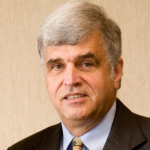To no one’s surprise, the latest traffic congestion numbers from the Texas Transportation Institute (TTI) show that traffic congestion is increasing across the nation.
Polls routinely show that traffic congestion is one of the most serious concerns of modern American urban residents. This fact has not been lost on the “smart growth” movement, which seeks to contain urban growth within artificial boundaries, while increasing population densities.
Among other things, smart growth promises to reduce traffic congestion by transferring travel to transit, walking, and bicycling, and by reducing average automobile trip lengths. Smart growth’s promise of “less traffic” is perhaps the movement’s most appealing claim for urban residents who experience increasing traffic congestion.
But what is the reality? Do urban growth boundaries and higher population densities in fact lead to lower levels of traffic congestion?
Evidence from abroad
A look at the European and Asian urban densities favored by smart growth proponents sheds light on the issue. For example, the urban areas of Europe are nearly five times as dense as those in the U.S., while Asian areas are nearly 15 times as dense. In many such urban areas, virtually all urban development must take place within urban growth boundaries.
The more compact and higher density urban form makes much higher levels of transit service feasible. In Asia, transit service levels per square mile are 70 times that of the U.S., while in Europe service levels are 15 times as high.
Not surprisingly, these higher population densities and higher transit service levels generate far higher market shares for public transit. In Asia, transit market shares are 20 times that of the U.S., while European shares are 10 times as high.
If the theory of smart growth with respect to traffic is correct, then people in Asian and European cities should experience less traffic congestion than in the United States, with its more dispersed urban form, greater use of automobiles, and virtual non-existence of transit use outside core areas.
But as anyone who has tried to travel in central London, Paris, Tokyo, or Hong Kong knows, traffic congestion is generally worse, not better, than in the U.S.
Daily vehicle miles traveled in Asian urban areas are 2.5 times that of the U.S., while European volumes are double that of the U.S. Worse, greater traffic congestion means slower speeds and more time in traffic. The average Asian urban area experiences six times as many vehicle hours per square mile as in the U.S., while European vehicle hours per square mile are 3.5 times that of the U.S.
Traffic is somewhat worse in the more dense urban areas of Canada, while Australia, with densities nearly as low as in the United States, has traffic levels similar to ours.
U.S. data confirm
Data on U.S. traffic patterns confirm the experiences abroad. A report prepared for the United States Department of Transportation indicates that for each 1.0 percent increase in population density there is a 0.8 percent increase in vehicle miles traveled at the densities most characteristic of U.S. urban areas.
Again, because higher traffic volumes are associated with slower speeds and stop-and-go traffic, it is possible higher densities produce more than a corresponding increase in vehicle hours. Nonetheless, the situation is comparatively favorable in the United States. Even Los Angeles, with both the nation’s highest urban area density and worst traffic congestion, has one-third fewer daily vehicle hours per square mile than the European average.
It is true that average vehicle miles traveled per capita declines somewhat with density—but far too little to offset the increase in travel propelled by the population increase. A simple example illustrates the problem.
If an area doubles in population density, average travel per capita must decline by one-half just to keep traffic volumes from increasing. No serious observer expects any smart growth strategy to achieve such dramatic results.
Portland: The best worst example
But the case against smart growth with respect to traffic congestion could not be made more eloquently than it has been by Portland’s planners.
Presiding over the most draconian urban containment policies in the nation, Portland projects that per capita traffic congestion will increase 350 percent by 2020. And the city is well on its way, with a TTI Travel Time Index (measures average excess travel time due to congestion in peak hour) typical of urban areas twice its size.
So, with respect to traffic congestion, proponents of smart growth are akin to the legendary used car salesmen, whose false promises are exposed the moment the car is driven off the lot. The politically incorrect truth is that America’s dispersed urban pattern has produced comparatively low levels of traffic congestion. Increasing the density of America’s urban areas will only make things worse.
Wendell Cox is a senior fellow of The Heartland Institute; a consultant to public and private public policy, planning, and transportation organizations; and a visiting professor at a French national university.




